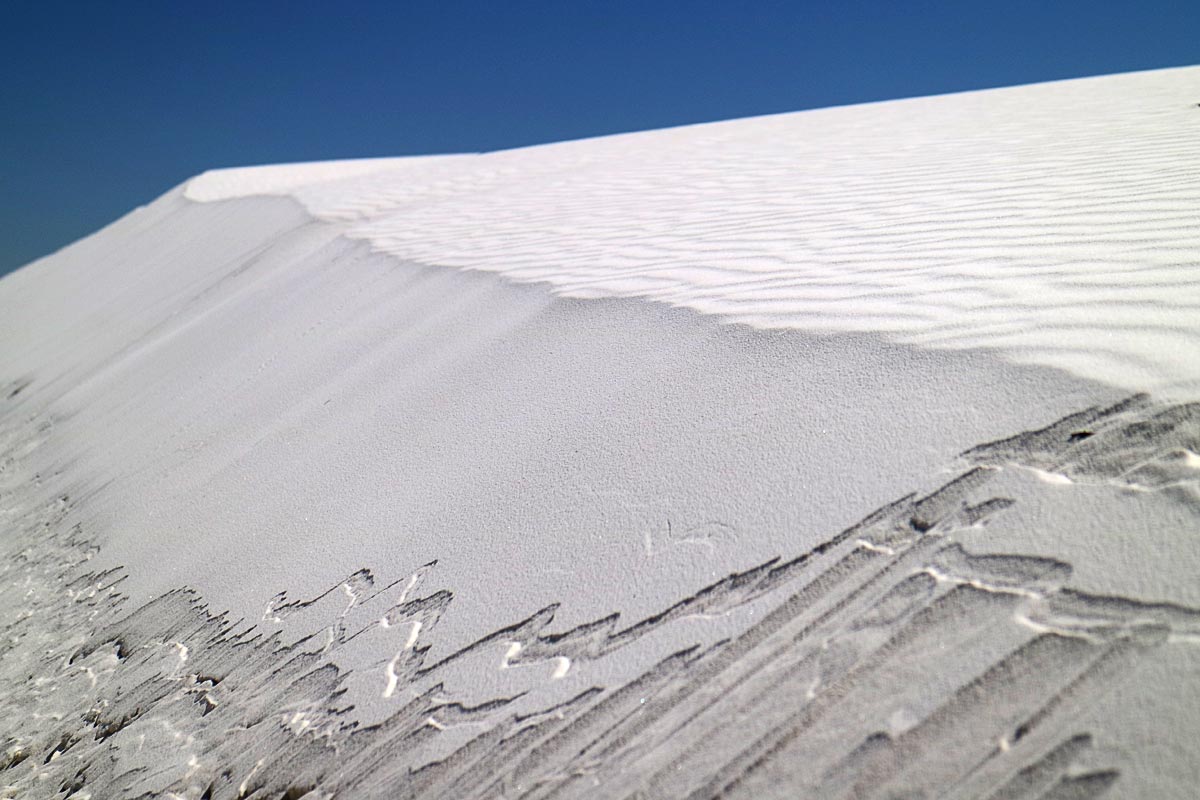
Kittens have nine lives but you have only one
You will go blind staring at the sun
Everything is coming true, everything you've heard
And God watches us through the eyes of little birds
—Guadalcanal Diary
This three-month road trip is admittedly haphazard. Too much planning and preparation would take all the fun and spontaneity out of it. But it also means that you have to be extremely flexible as new things pop up unexpectedly. This was the backdrop of today’s visit to crazy White Sands National Monument in central New Mexico.
Masayo and I were planning on heading from Deming, where we’d lodged overnight, to Roswell, home of aliens and a much cheaper base than the city of Carlsbad for the next three days. It was only at the last minute that I noticed how our route was taking us right by the entrance to White Sands National Monument. Some quick driving schedule-tweaking and we hit the road.
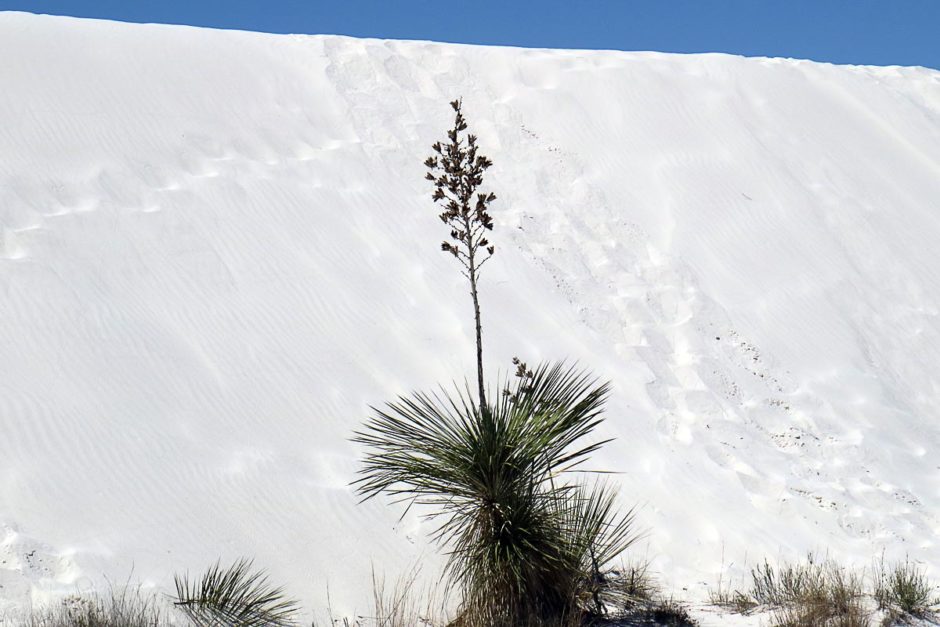
A classic White Sands photo: the ubiquitous yucca.
White Sands is located in the middle of White Sands Missile Range, a gigantic Army and NASA test range where, famously, the US tested its first nuclear explosion (code-named Trinity) during World War II. A natural National Monument preserving a vast and rare expanse of fine gypsum sand in the middle of one of the most destructive and controversial weapons testing grounds in human history?
Why not?
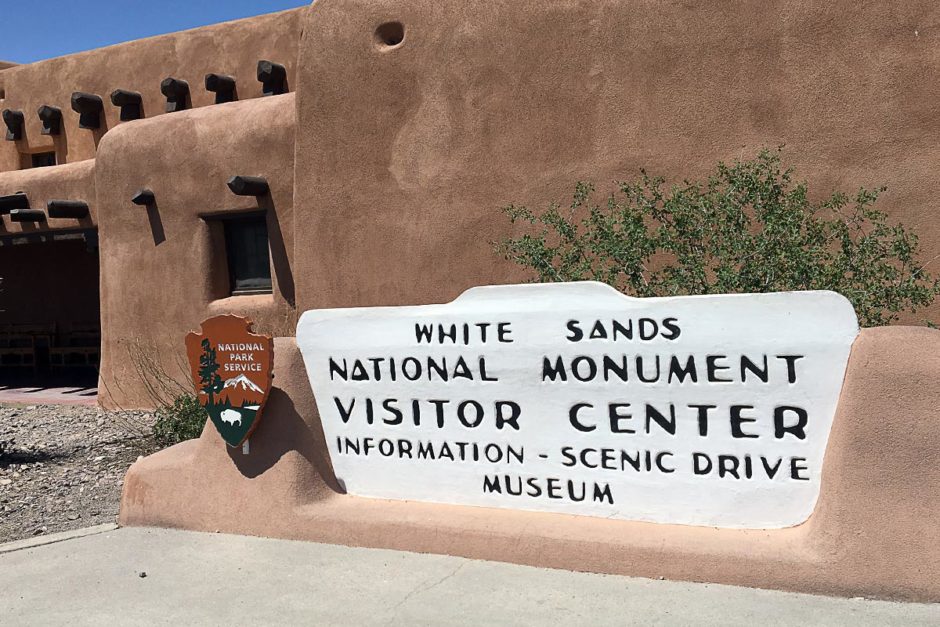
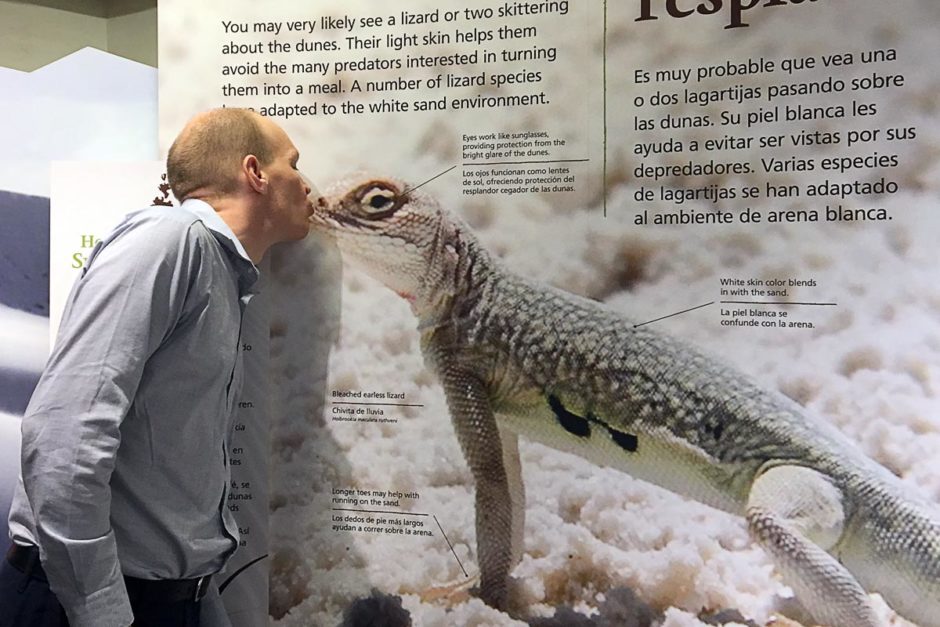
We arrived and stopped in at the visitor center, which like Organ Pipe Cactus National Monument was every bit as nice and modern as an actual National Park’s. We got our souvenir token and postcard, inquired about the monument from a friendly and helpful ranger, and then set out on the short 8-mile drive that goes in among the great dunes and back out via the same route.
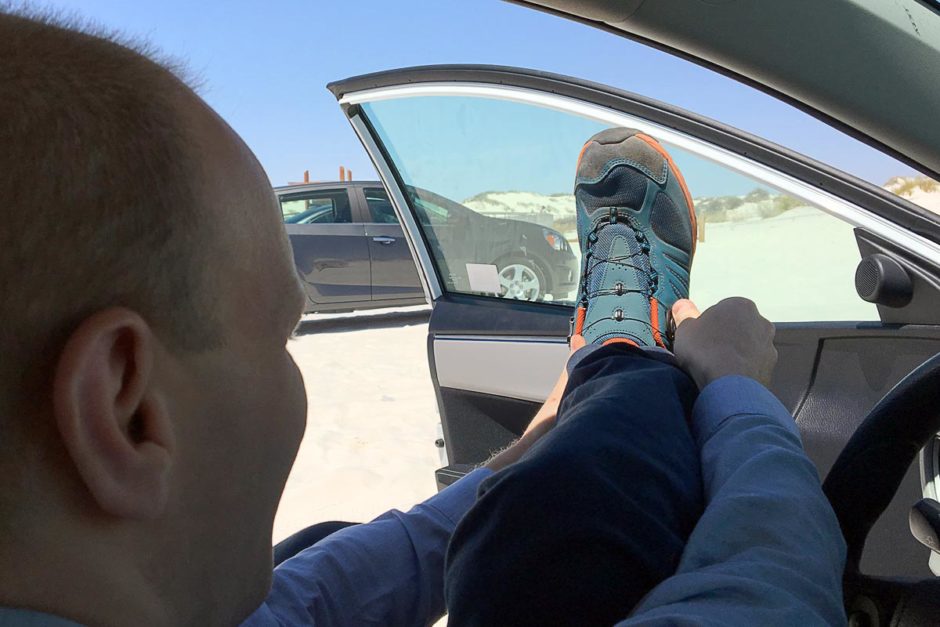
The first thing you notice in White Sands National Monument is that it looks just like a beach. The nice, pure-white and ever-changing dunes are in some spots home to scrubby little plants and in others smooth and visually unbroken. It reminded me of Siesta Key in Florida.
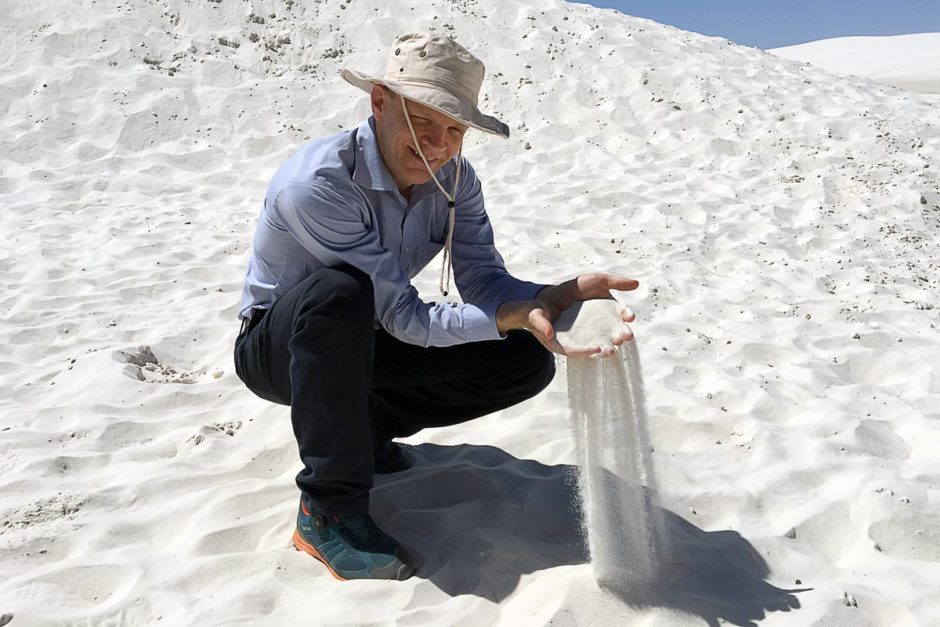
Yes kind sir, I squint and sift.
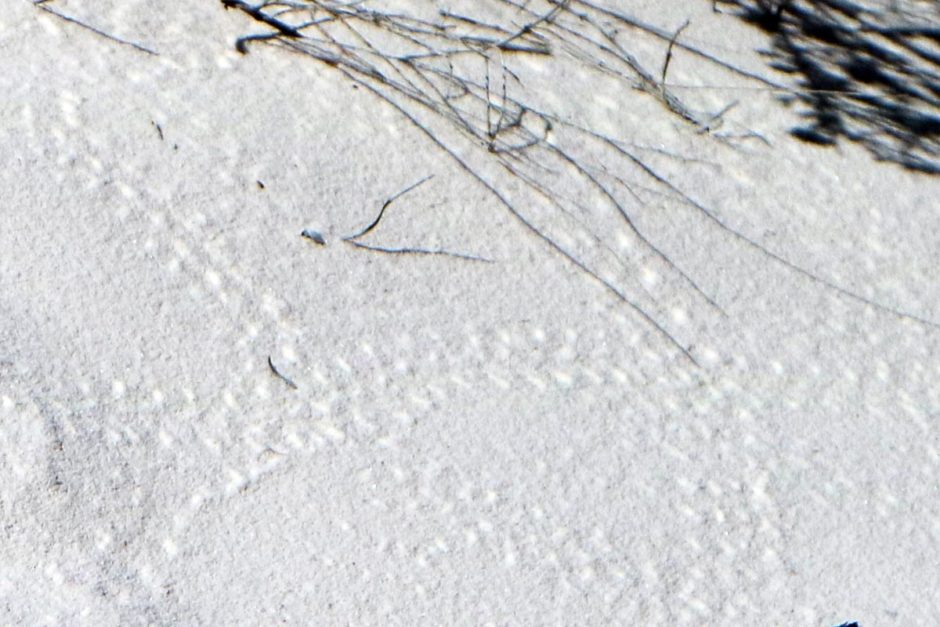
Animal tracks: a lizard, perhaps?
But you have to keep reminding yourself that this is in fact the middle of the desert, and there is no ocean or much water at all anywhere near you. The hot sun and blinding white vista helps with this reminder quite a bit.
Especially for me: my ancestors were from Scandinavia, which is cloudy and icy in winter; and England, which is green and rainy a lot. My pale eyes aren’t made for super bright light, and on our stroll along a wooden boardwalk just inside the Monument all I could do was squint pitifully and try to make out the path in front of me. I began to question my “not owning sunglasses” approach to life.
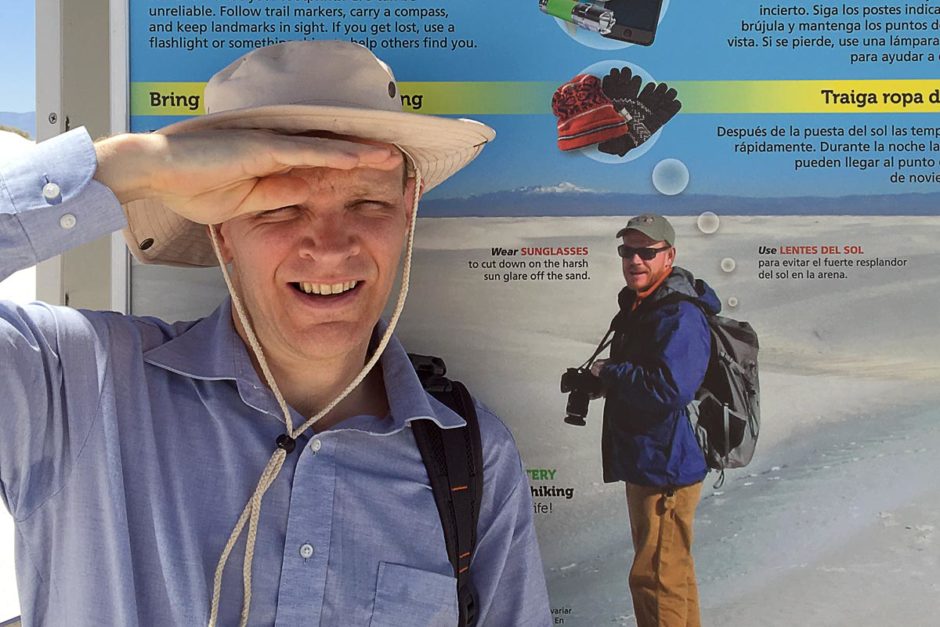
Masayo, claiming that Asian eyes had no problem with such glare, was able to open her eyes normally and stride merrily around snapping photos of the plants and the tourist signs along the way. I looked like a whiny and confused Popeye, she an aggressively regular person. It was frustrating but, I have to admit, comical.
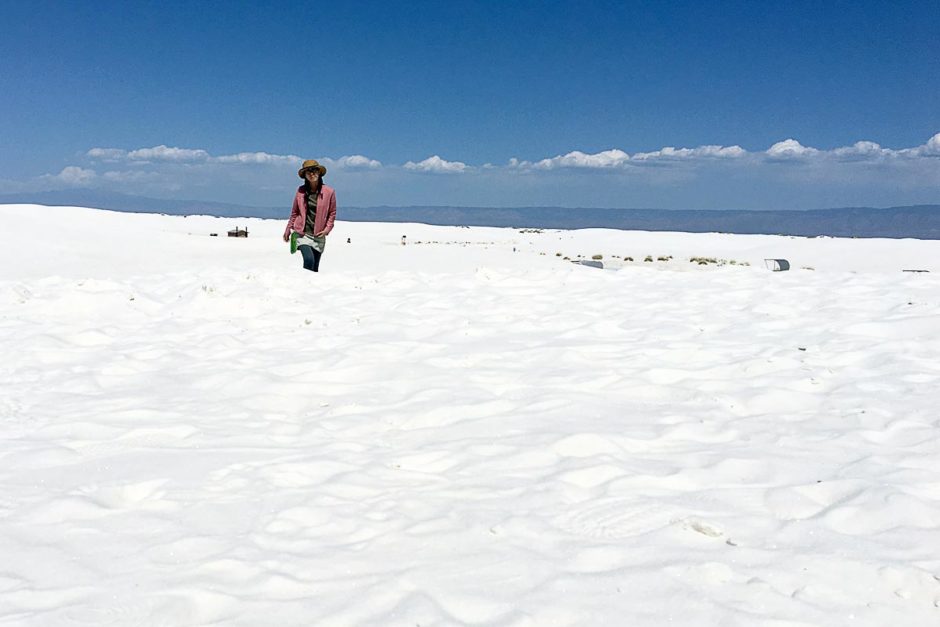
Further down the road, as people used plastic discs to sled down the dunes and others lay in the direct sun getting tanned (rather quickly, one presumes), we found a picnic area: like something from The Jetsons, silver aluminum half-shells rose from the ground to shade a table and a grill; you park alongside and the heat isn’t too bad inside. (At least here in April; I wouldn’t want to be here in August.)
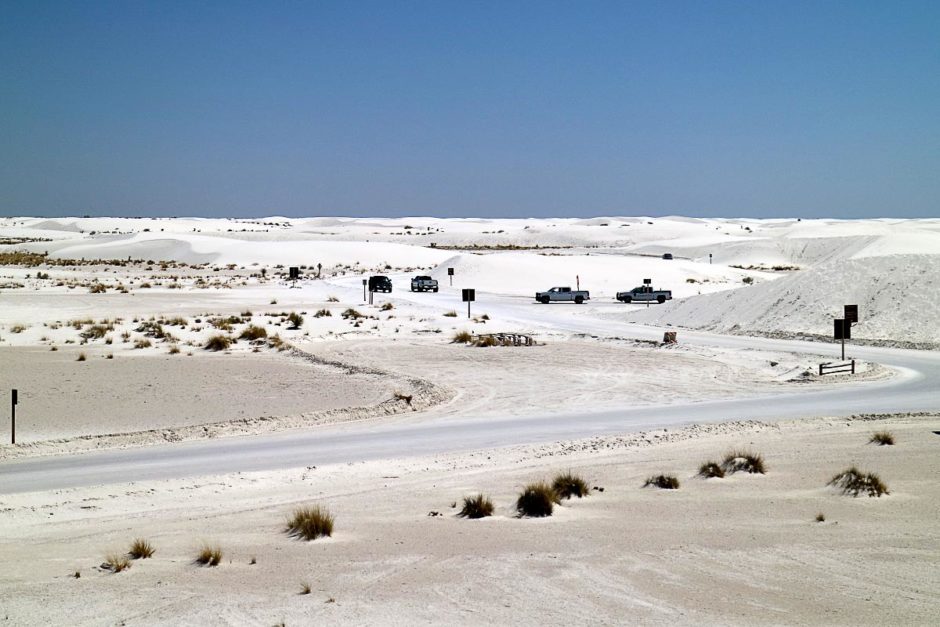
Visible from space – and the top of this dune.
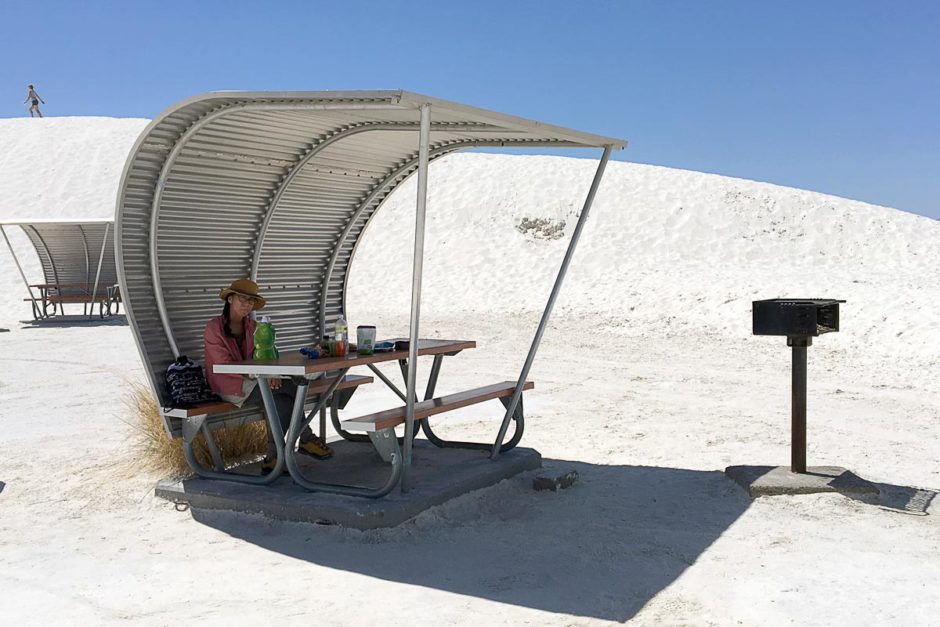
We pulled up and got our food out, the usual array of fruits, cookies, vegetables, crackers, and warm water that has been our picnic staple so far on this trip. Soon we were climbing up the nearest dune to get views over the whole Monument: white sand as far as you can see, with bigger rock mountains in the far distance. These dunes are big enough that astronauts can “easily” see them from space, according to the visitor center display.
With that, our day at the mutant, alternative-world beach was over: while people continued to slide down the hills, bury themselves up to their neck for goofy photos, and walk their excitable and panting dogs, we drove slowly back out to the entrance.
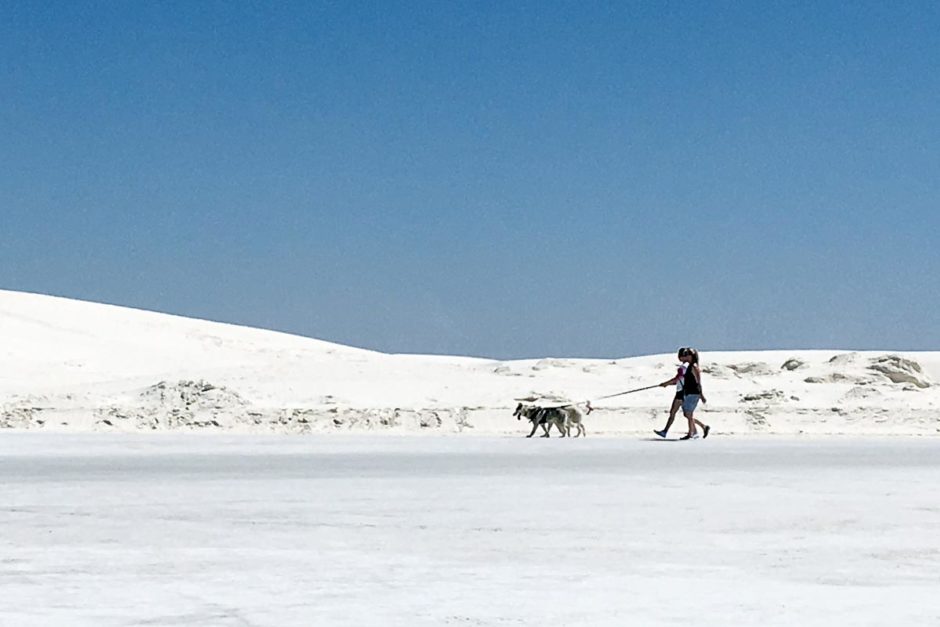
We were fortunate that our route just happened to take us near White Sands National Monument: it would have been worth a long detour!
Diabetes in the sand
My blood sugar before the sandy picnic was 207: the toast and hash browns in Deming were more than I’d bargained for.
But the lunch, made up of mostly-healthy and light foods, was easy to calculate a Humalog dose for. And, even though right after injecting it I was within minutes hiking and climbing up sand dunes, I didn’t think that was enough exercise to affect it that much.
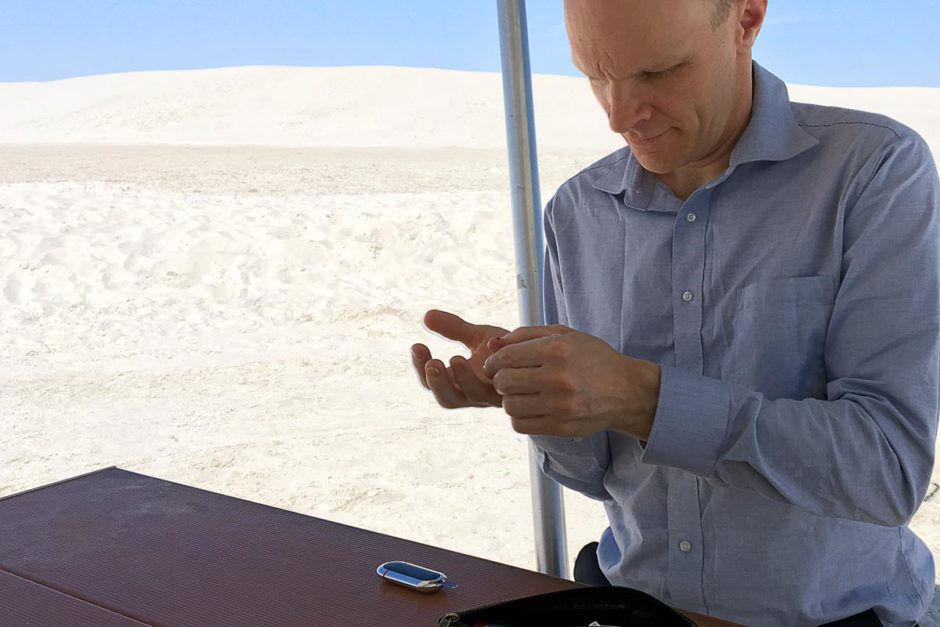
The One Drop meter is proving resilient in all kinds of environments.
I was right: later in Roswell, before a large dinner at a Mexican place called Cerrito’s, I was 163. Not perfect, but acceptable for now.
The Mexican food made me high later, but that’s another story!
Thanks for reading. Suggested:
- Share:
- Read: Day 13: The diabetes cowboy in Carlsbad Caverns National Park – yeehaw!
- Join: Free email newsletter (info and early video access)
- Support: Patreon (much earlier video access and other perks)

Support independent travel content
You can support my work via Patreon. Get early links to new videos, shout-outs in my videos, and other perks for as little as $1/month.
Your support helps me make more videos and bring you travels from interesting and lesser-known places. Join us! See details, perks, and support tiers at patreon.com/t1dwanderer. Thanks!
Want more? Get the free newsletter
Join us! Sign up to my email newsletter to receive updates, behind-the-scenes info,
and early links to my new YouTube videos before everyone else
